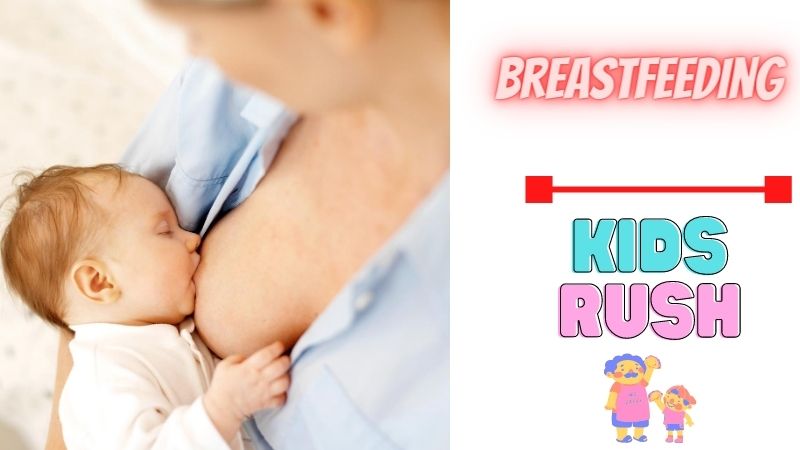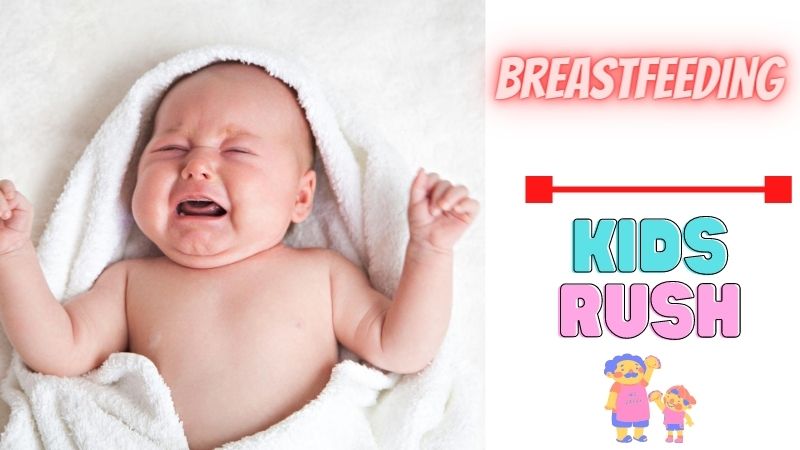Breastfeeding: Frequently asked questions
Breastfeeding is a wonderful way to feed and bond with your baby. It’s a natural process, but it can be tricky at first until you get the hang of it. Discover what happens during breastfeeding, the advantages it has for you and your child, and how to breastfeed your baby, from the latch to the breast pump.
What are the benefits of breastfeeding for my baby?
Breastfeeding has many benefits for your baby. Breast milk has many minerals and nutrients that help your child grow. Besides, it reduces the chances of them occurring:
- Ear infections
- Allergies
- Eczema
- Asthma
- Vomiting
- Diarrhea
- Pneumonia
- Juvenile diabetes
- Obesity in adolescence and adulthood
- Sudden Infant Death Syndrome (SIDS)
Some studies also claim that it supports the development of the baby’s brain.
What are the benefits of breastfeeding for me?

Not only does the baby benefit, but also the mother. Breastfeeding promotes the bond between mother and baby by stimulating the production of oxytocin, the “love hormone,” which also helps the uterus regain the size it was before pregnancy. Breastmilk is practical, needs no preparation, and is always available. Another important benefit: breastfeeding can reduce the risk of breast or ovarian cancer.
Breastfeeding can also help you lose the weight gained during pregnancy. Breastfeeding consumes part of the fat accumulated during pregnancy, allowing you to lose weight at the right rate for your body. Do not worry if you lose weight slowly, because your body will need some of this fat when the baby grows and demands more milk.
How do you breastfeed?
As soon as the baby is born, place it in contact with your skin. This should activate the reflex that helps the baby latch onto the nipple. Try holding one breast with your hand and stroking your baby’s lower lip with your nipple. If she yawns or opens her mouth a lot, moves her closer, and directs the nipple towards her roof of the mouth. Bring the baby to the breast, not the breast to the baby.
Newborns can suckle for 10-15 minutes from each breast. The baby may only want one breast or want a double portion. When she releases one breast, offer the other to see if she is still hungry. If you don’t want more, start with the other breast next time. Try different breastfeeding positions until you find the most comfortable one.
What does healthy breast milk look like?
In the first days of breastfeeding, you may notice that your milk is a thick, yellowish substance. You might be wondering if that’s what breast milk is supposed to look like, but don’t worry – it’s normal. What you produce at this stage is called colostrum, and it is thought to be your baby’s first food and first immunization against disease. At first, your baby’s stomach only holds about a teaspoon of liquid, so don’t expect him to eat a lot.
Between two and five days after delivery, more or less, you will notice that your milk becomes creamier. This transitional milk is produced when your breasts stop producing colostrum and start giving mature breast milk. You will be in full production of mature breast milk by the end of the second week after delivery. Mature milk is thinner than transitional milk when it is first secreted, similar to skim milk, but later becomes creamier when fat is released.
How can I tell if my baby is hungry?

In breastfeeding, timing is also important. Crying is a late sign of hunger, and a dissatisfied baby may have trouble latching onto the nipple. Be on the lookout for signs of hunger; for example, when the baby:
- be alert
- fold your arms
- clench your fist
- put your fingers in your mouth
- make the gesture of sucking.
When the baby is full, he will close his eyes and relax his arms and legs.
How often should I breastfeed?
Let the baby set his schedule. Don’t be surprised if she wants to breastfeed every hour for the first two days of life. This helps stimulate milk production to meet the newborn’s breastfeeding needs. As your milk rises, your baby will be less hungry, which means you will probably only breastfeed every 2 to 3 hours, or 8 to 12 times a day.
How do I know if I have enough milk?
You may wonder if you have enough milk. If you hear how the baby swallows when nursing, you know there is milk there. If you fall asleep after eating, you are full. The newborn eats enough if:
- Pees about six times and soft poop two to five times a day, up to six weeks
- Your urine is light yellow, not yellow or dark orange
- Your breasts feel soft after feeding.
What should and should not be done when breastfeeding?
You may wonder what you can and cannot do while breastfeeding, or if you should follow a special diet for breastfeeding to make sure your baby receives all the nutrients he needs. During breastfeeding, do the following:
- Eat 450 to 500 more calories a day to make enough milk.
- Eat fish or shellfish two to three times a week, but not fish with high levels of mercury or contaminants, such as swordfish, bluefin tuna, pike, and shark.
- Take a multivitamin supplement while breastfeeding if recommended by a healthcare professional.
- Drink lots of fluids.
- Drink little or no caffeine for the first few days after delivery (a moderate amount later, about 200 mg a day, is unlikely to affect the baby).
- Wait at least two hours after drinking alcohol to breastfeed.
- Have no more than two alcoholic drinks a day.
- Consult a healthcare professional if you need to take medication while breastfeeding. Most medications are safe, but some can pass to the baby in small doses through breast milk.
- Don’t smoke, as second-hand smoke can be harmful to your baby and tobacco can reduce your milk production.
- Ask a health professional what contraceptive methods you can use while breastfeeding.
What should I know about breast pumps?

Breast milk production is governed by the law of supply and demand, so the more you breastfeed or the more milk you express, the more you will produce. Breast pumps can help if you are going to go back to work while breastfeeding or if you want to maintain your milk supply when the baby does not want to breastfeed.
We give you some tips for using the breast pump:
- Just relax. Stress can reduce your milk supply, so find a quiet, relaxing place to pump.
- Express milk frequently. This will keep a good production. You can even express milk from both breasts at the same time.
- Breastfeed the baby on demand. If you notice that the baby is hungry, try to breastfeed directly. This way you will also have more milk when you express it.
- Drink lots of fluids.
Until when should I prolong breastfeeding?
Health professionals recommend that the baby be exclusively breastfed for the first six months of life. Afterward, you can start to introduce a more varied diet, supplementing breast milk with solid foods until the child’s first year of life. There is no time limit for a mother to stop breastfeeding her child: that decision must be made by both of you. When you’re ready to wean your baby, read our weaning tips.
Is there anything else that can help me with breastfeeding?
You may need a little help getting started, especially if it’s your first time to breastfeed, and it’s normal. We offer you several tips to make breastfeeding a little easier:
Don’t be afraid to ask for help
The first time you breastfeed, ask for help. A maternity nurse or lactation consultant can help you find the best position to breastfeed and help your newborn latch on properly.
The baby can sleep in the same room as you
During the first six months of your baby’s life, it may be more comfortable for her to sleep in the same room as you, in her crib or bassinet, so that you can more easily breastfeed when she is hungry.
Try not to start using the pacifier too early
Don’t give your baby a pacifier too early. Doing so can interfere with breastfeeding, as sucking is different from sucking on the nipple. Experts recommend starting to use a pacifier only when breastfeeding is established, usually three to four weeks after birth.
Take care of your nipples
You can let the milk dry naturally on your nipples, which can soothe them, but if you don’t have time, pat them dry. Use breast pads to prevent leakage, and change them frequently. When you bathe or shower, try to avoid or minimize the contact of the shampoo, gel, or soap with your nipples. If you have dry and cracked nipples, you can use purified lanolin after breastfeeding to soothe them and help them retain moisture. Consult a healthcare professional if you notice symptoms of mastitis, which may include flu-like symptoms and breast pain.
Breastfeeding is a natural process, but establishing a correct routine can take time for both you and your baby. Many mothers need a little help at some point. Read more about how to breastfeed a newborn if you need help with the first feedings. You can also ask a lactation consultant for help, who will teach you proper breastfeeding techniques.
